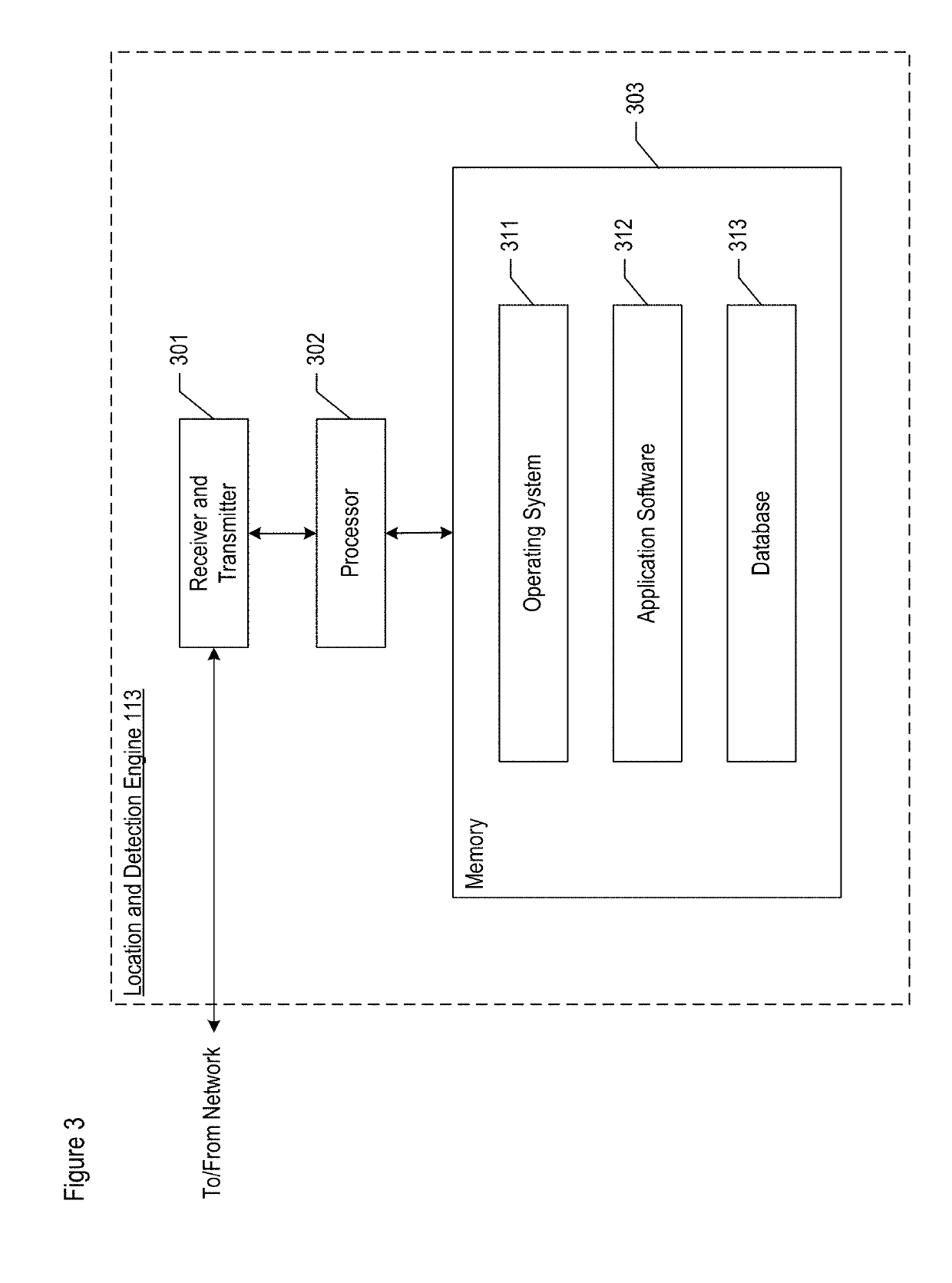Estimation of the Location of a Wireless Terminal, Based on Characterizing a Pressure Wave
- Summary
- Abstract
- Description
- Claims
- Application Information
AI Technical Summary
Benefits of technology
Problems solved by technology
Method used
Image
Examples
Embodiment Construction
[0067]FIG. 1 depicts a diagram of the salient components of wireless telecommunications system 100 in accordance with the illustrative embodiment of the present invention. Wireless telecommunications system 100 comprises: wireless terminals 101 and 102, cellular base stations 103-1, 103-2, and 103-3, Wi-Fi base stations 104-1 and 104-2, wireless infrastructure 111, location-based application server 112, location and detection engine 113, and GPS constellation 121, interrelated as shown.
[0068]Wireless infrastructure 111, location-based application server 112, location and detection engine 113 (hereinafter “location engine 113”), and Wi-Fi base stations 104-1 and 104-2 are all connected to one or more interconnected computer networks (e.g., the Internet, a local-area network, a wide-area network, etc.) and, as such, can exchange data in well-known fashion.
[0069]Although the illustrative embodiment depicts wireless telecommunications system 100 as comprising two wireless terminals, it ...
PUM
 Login to View More
Login to View More Abstract
Description
Claims
Application Information
 Login to View More
Login to View More - R&D
- Intellectual Property
- Life Sciences
- Materials
- Tech Scout
- Unparalleled Data Quality
- Higher Quality Content
- 60% Fewer Hallucinations
Browse by: Latest US Patents, China's latest patents, Technical Efficacy Thesaurus, Application Domain, Technology Topic, Popular Technical Reports.
© 2025 PatSnap. All rights reserved.Legal|Privacy policy|Modern Slavery Act Transparency Statement|Sitemap|About US| Contact US: help@patsnap.com



